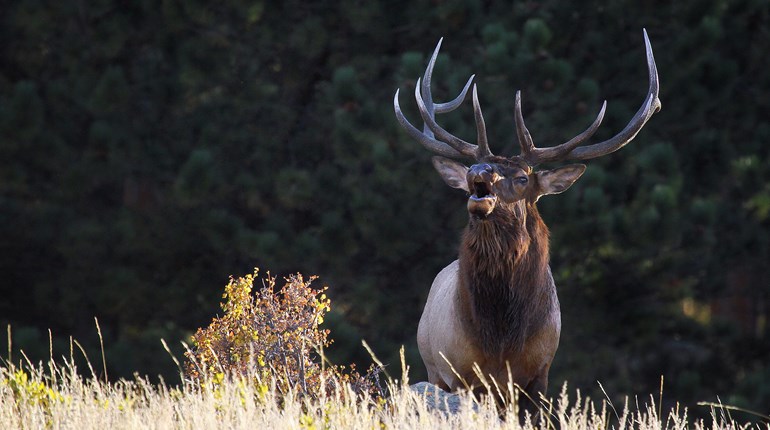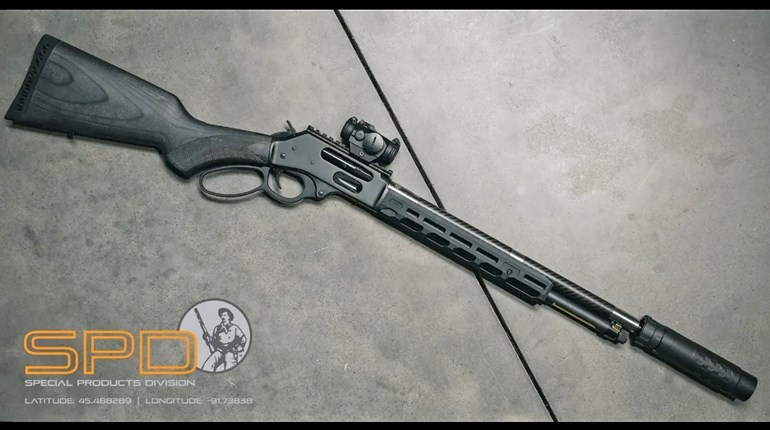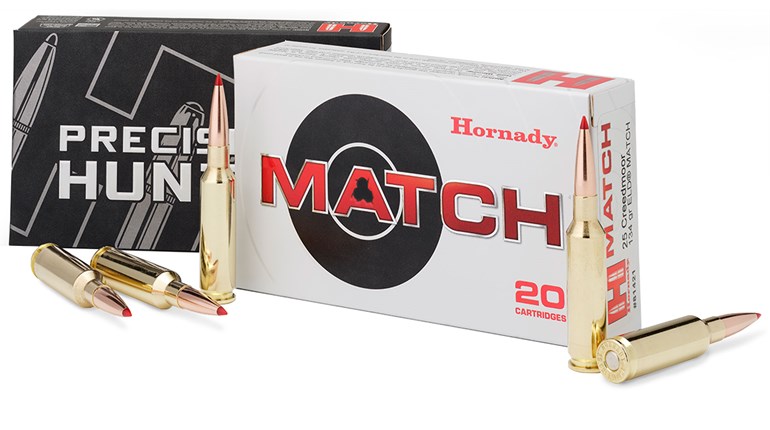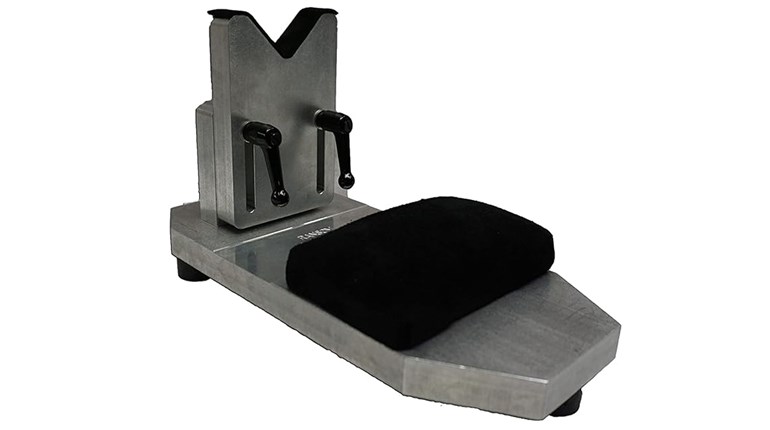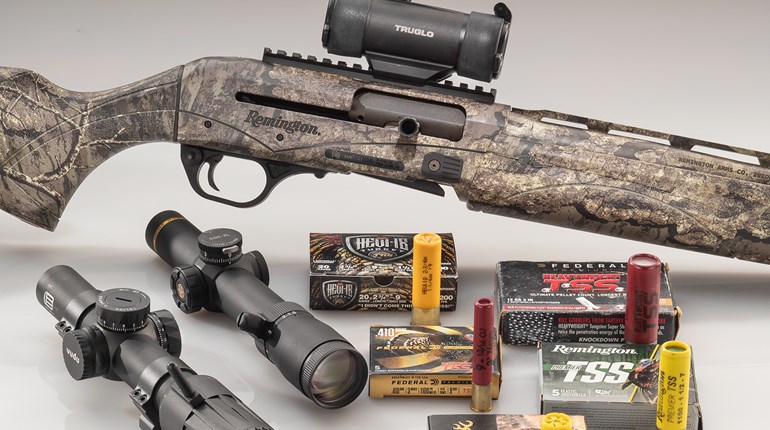
It’s been a while since I’ve heard anyone talking trash about “mouse guns.” Hopefully the “manly myth” that only weaklings of questionable intellect venture from home carrying a handgun caliber less than .40 has been laid to rest. From the very beginning it was kind of a foolish statement, considering that our military and virtually all our police departments now issue such guns to their personnel. Wearing any of the modern double-stack polymer pistols and carrying two spare magazines, each police officer has anywhere from 45 to 60 rounds of ammo at his or her immediate disposal to get them safely home at the end of the day. That’s a big improvement over the 22 rounds of a 1911 with two spare magazines or 18 for a revolver with two speedloaders.
But, what if something large-scale bad happens—like a natural or man-made disaster—followed by a hopefully temporary, but perhaps-prolonged, breakdown in communications and social order? Suddenly, we’re in a survival situation where everyone becomes responsible for their own full-time security. This includes people who may never have fired a gun. If you have a centerfire pistol and a box of ammo for personal and home security, how long do you think that will keep the family safe? And if you were upset over the shortage of toilet paper at the beginning of the COVID lockdowns, wait until you try to buy ammo at a time when everyone feels threatened.
A couple of times a year, a few gunwriters, myself included, gather at Gunsite Academy for 3 days of instructor-supervised, self-defense training. Within the scope of that philosophy, the event’s structure and content follow a theme selected by the visiting writers. This past winter, the theme was “Survival Guns,” and the firearms used were all .22-caliber rimfires.

The use of 22 rimfires at this event does not constitute a recommendation that these guns should replace larger, centerfire calibers for everyday carry and self-defense. Rather, it was a hands-on look at the pros and cons of using .22 rimfire firearms and ammunition in a survival situation. It’s a trade-off between the enhanced terminal performance of a single, larger-caliber round compared with the advantage of having substantially more, smaller rounds. This is actually a never-ending debate in the shooting world. Witness the number of articles written in the last few decades on how to improve upon the performance of 5.56 NATO with new calibers using bullets with a slightly larger diameter and greater weight while maintaining the same magazine capacity.
Choosing an appropriate gun for a survival situation requires you to first make some kind of judgment as to what that situation will involve, or more specifically, what type of threats you are likely to face. Using Gunsite’s standard human silhouette paper targets with no distinctive aiming point served as a vivid reminder that the most prevalent threat in much of the country will likely be two-legged predators. That said, one should not ignore the prospects of having to forage for food. Keep in mind that while .22s are not recommended (or even legal in most places) for big-game hunting, some very large animals have been put down by the little rimfire’s bullets While it’s certainly not recommended to stop a charging animal, with expert shot placement, the .22 LR can take down surprisingly large game, and a survival situation is different from hunting season.
The subdued “pop” of the Ruger Single-Six on my first trip to the firing line made me wish I had my .45 ACP 1911 or a 9 mm with at least a 15-round magazine. After firing a couple dozen rounds and going forward to tape the targets, I was reassured to see that all 24 holes were clustered tightly in the torso. It wasn’t just the group size that pleased me, but also the idea that if needed, I had reasonably quick access to another 76 rounds of ammo still on my person, much more than I’ve ever carried while packing my CCW handgun. I was also reminded how much easier it is to shoot a .22-caliber handgun well compared with a .45 ACP or even a 9 mm, particularly for new shooters.

As we progressed through various drills, individual preferences and the rationale for them began to surface for specific types of guns. After a full career as a police officer, our Rangemaster, Lew Gosnell, showed a strong liking for Ruger’s tiny LCP II semi-automatic in .22 LR, which carries 11 rounds of ammo in the gun and is extremely easy to conceal. He also addressed the requirement of foraging—the other vitally important requirement in a survival situation—by selecting a compact Ruger rimfire rifle. Though not as immediately accessible as the LCP II, the rifle extends your effective range for both hunting and defensive scenarios while remaining light and using the same ammo as your “pocket” pistol. As a precision rifleman, Gosnell selected the bolt-action Ruger American rifle. Since I’m not as proficient with a long gun, I opted for Ruger’s legendary semi-automatic Model 10/22.
But, my immediate thoughts focused on a one-gun carry option with a firearm that was reasonably concealable and allowed me to place shots with enough precision to harvest small game at ranges of 25 yards or so. I don’t shoot tiny guns with minimal sights very well, so I reviewed my personal history of competitive shooting and handgun hunting.
Long-term relationships build confidence, so it was no surprise that I turned toward Ruger’s .22 LR Single-Six, a handgun that has shared trail time with me since I was 16 years old. My original Single-Six had fixed sights that presented an excellent picture, and I’ve harvested an impressive number of small-game animals over the years with it, some at ranges beyond 25 yards. Adjustable sights are not required for typical self-defense ranges, as evidenced by their absence on most police and military handguns. But, in a survival role, you might have to use different brands of ammo featuring different bullet weights. If you can’t adjust your sights for different bullet-impact points, your ability to forage may be severely compromised. You can’t count on being resupplied with the same brand of ammo, or even being resupplied at all.
No longer having my original Single-Six, I took a look at what’s available today, and since there have been significant changes in Ruger’s single-action rimfire handguns, I had to re-evaluate. Decades back, the company introduced the Bearcat model, a slightly smaller and lighter version of the Single-Six. Ruger offers dealer exclusives with my preferred adjustable sights that weigh a half-pound less that the current Single-Six while sporting a barrel almost a half-inch shorter. It has all my desired capabilities, but lacks one option; there is no second cylinder chambered in .22 Mag. This does not disqualify the Bearcat from consideration, but the inability to use a more powerful caliber does make the slightly larger Single-Six a more attractive option.

The other Ruger small-frame, single-action option is the company’s Wrangler. It’s a .22 LR with a barrel about a half-inch shorter than the Bearcat, a weight halfway between the Bearcat and Single-Six, a birdshead grip and a Cerakote finish. On the plus side, the shorter barrel and birdshead-grip frame make the gun easier to conceal (although concealability is likely less of a concern in a survival scenario), while the Cerakote finish enhances the gun’s survivability in terms of exposure to environmental elements. In my opinion, the fixed sights are both a positive and negative feature—the sights make the gun less expensive and more rugged, but they also take away the ability to adjust for different ammo.
I may be overthinking this. One definition of the best survival gun is “whatever you have with you when your survival is threatened.” I made a run through my safe looking at .22s that I haven’t fired or even handled for some time. One oldie but goodie is a High Standard Model HD Military target pistol that hasn’t been fired in the last 15 years. Emphasis should be place on the word “target.” There are guys who can shoot 1- to 2-inch groups firing one-handed at 25 yards. I’m not one of those guys, but with those precisely adjustable sights using two hands and a minimal rest, I can take a rabbit (or put 10 shots into a melon-size target) beyond 25 yards.
Another “rediscovered” treasure was a Smith & Wesson J-frame Model 34-1 with a 2-inch barrel. This old kit gun carries about half the ammo of Ruger’s LCP, but it is pocket concealable and wears Smith’s old-school adjustable sights. I’ve put many thousands of rounds through it and never encountered any problems.

Finally, my Kimber Rimfire Target .22 LR full size (but lightweight) 1911 crawled out from its long-term hibernation in its gun sack to say hello. Years ago, the Kimber with its classic 1911 grip shape helped me relive my glory days shooting bullseye targets as a 24-year-old Air Force Lieutenant (not so much “glory” days as “glorious” days). The familiarity of the platform—one which I’ve used in countless classes and range trips—makes it a good choice for me and any other fans of the 1911, since the manual of arms is identical, as is the grip angle, sight picture, etc.
I can’t leave this subject without mentioning an all-time classic: a handgun that launched a dynasty. In 1949, Ruger introduced its first gun, the semi-automatic Mark 1 pistol chambered in .22 LR, and as they say, “The rest is history.” But, while the rest may be history, the evolution of that particular handgun has resulted in it being perhaps the most qualified, small-caliber survival pistol available today. It sports adjustable sights, multiple rails for optional weaponlights and/or optics, plus a threaded barrel for a suppressor—an extremely useful accessory for a survival handgun. The current MK IV Tactical, (or .22/45 Tactical or .22/45 Lite) can be equipped with accessories that vastly improve your capabilities for self-defense and foraging, particularly if concealment is not a major concern.
A quick exercise utilizing my reloading scale and ancient math skills yielded some interesting numbers. I weighed single rounds of ammo from .22 LR up through .45 ACP, multiplied the number by 1,000 rounds, and divided by 7,000 to convert grains to pounds. Long story short, 1,000 rounds of Federal’s 29-grain .22 LR Punch ammo weighed about 6 pounds, while 1,000 rounds of CCI’s 40-grain, copper-plated .22 LR ammo weighed a tad more than 7 pounds. Weights for 1,000 rounds of larger-caliber defensive rounds were as follows; Black Hills 124-grain 9 mm JHP was 27 pounds, Hornady 147-grain 9 mm JHP was slightly more than 30 pounds and Sellier & Bellot’s 230-grain .45 ACP FMJs weighed 46 pounds. That means you could stockpile (by weight) at least about four times as many rounds of .22 LR versus most centerfire handgun rounds.
There are many things to consider when selecting a survival gun, and many of those things are unknown. What is known is the tremendous weight advantage offered by rimfire ammunition, especially important if you’re on the move. What’s also known is that replenishing your ammo supply will be difficult (if not impossible) after any sort of societal breakdown—it can be exceedingly difficult even in less-dire circumstances such as demand spikes or supply-chain bottlenecks.
If you’ve never really thought about the importance of rimfire firearms to your family’s safety, take a second look at your rimfire plinkers. You may find something more useful than you imagined.














